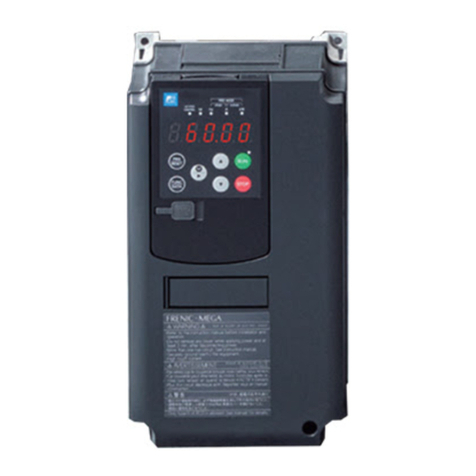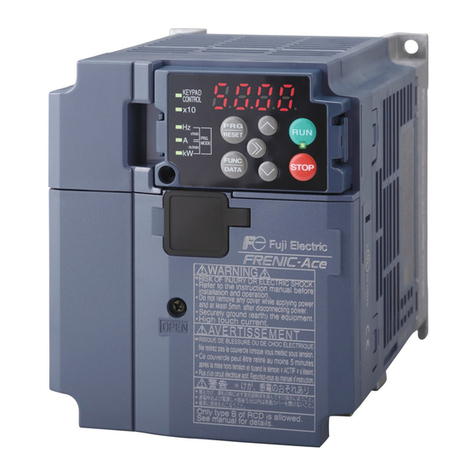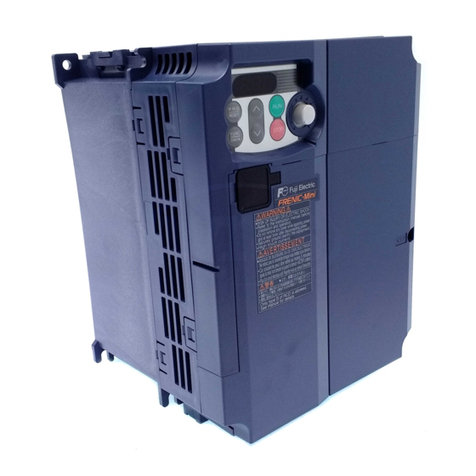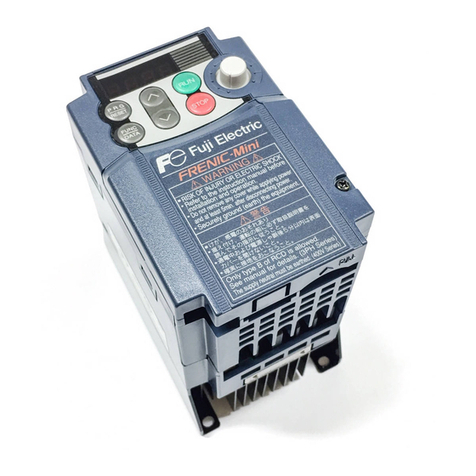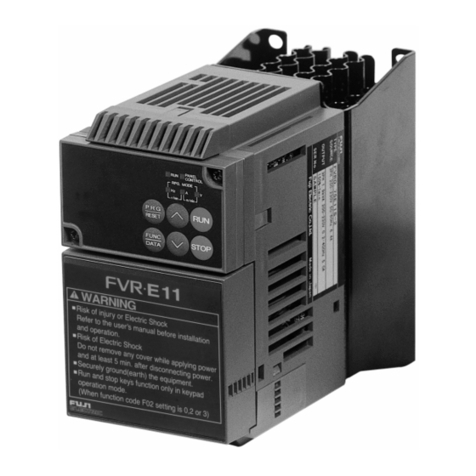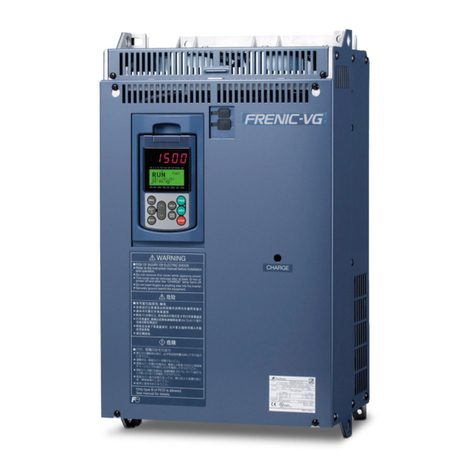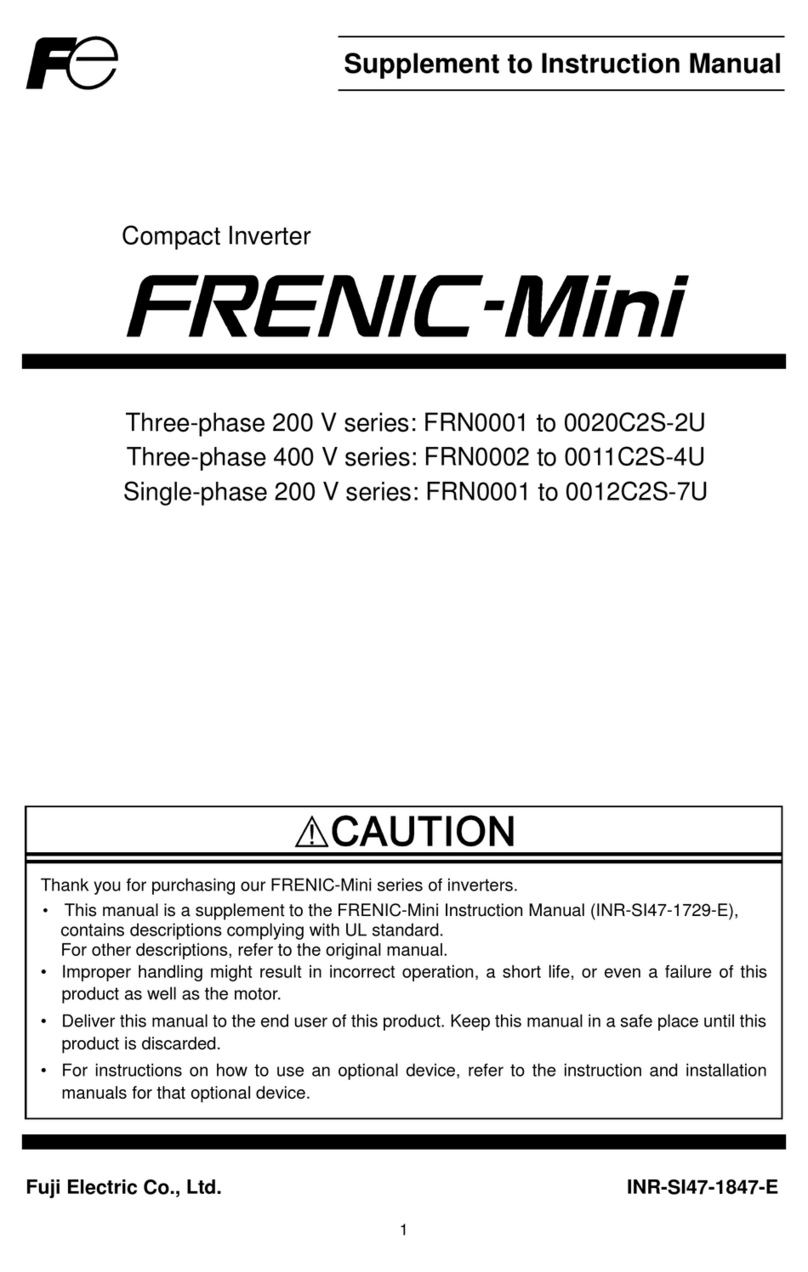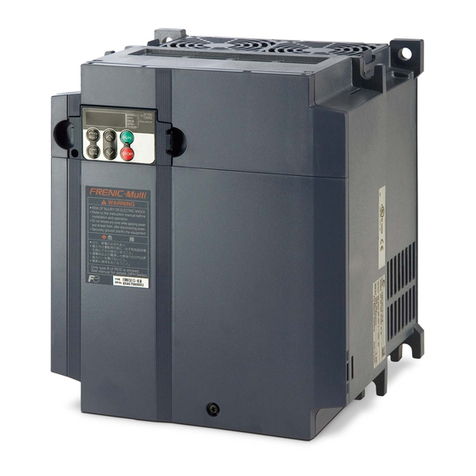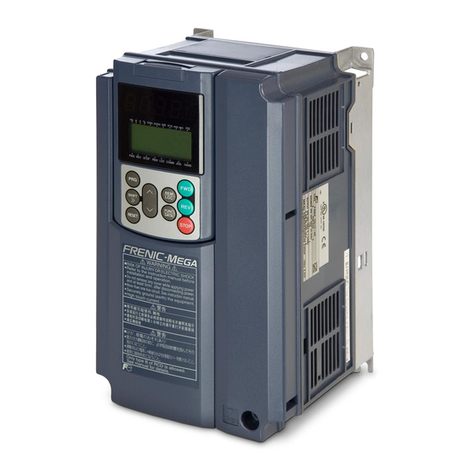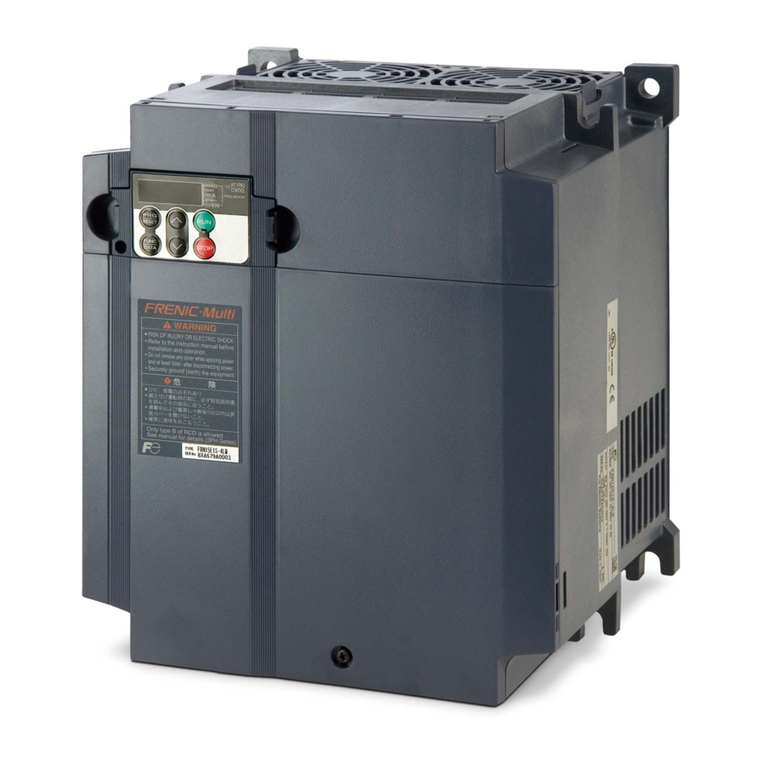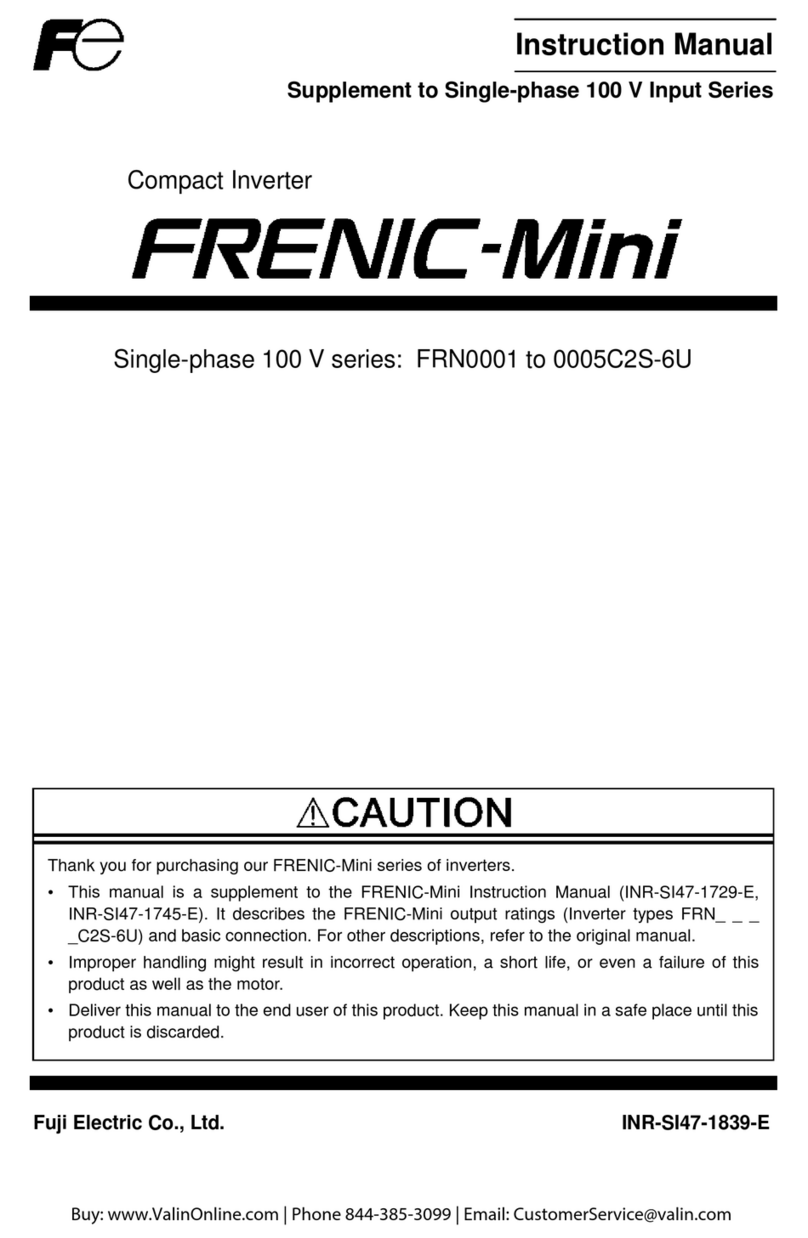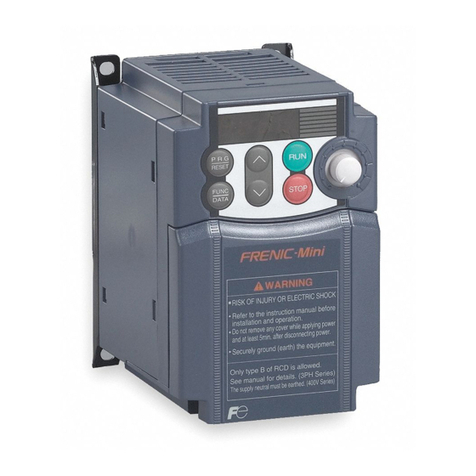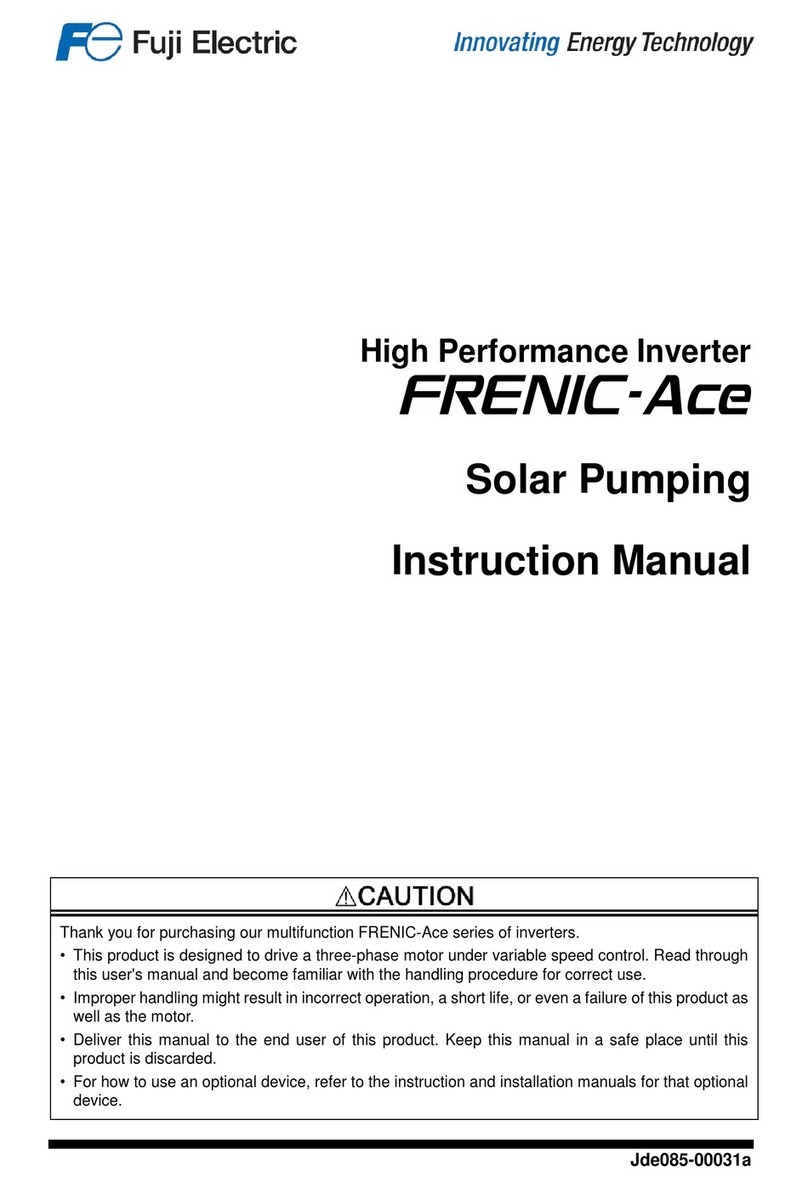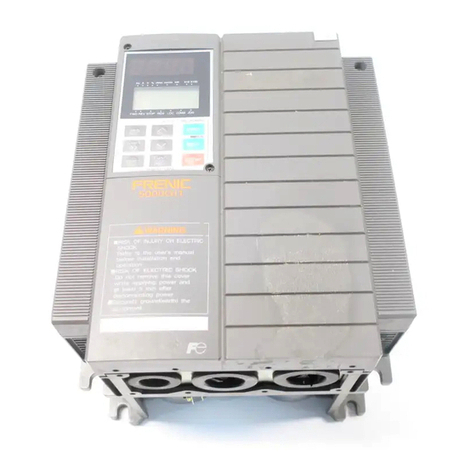• Be sure to perform wiring after installing the inverter unit. Otherwise, an electric shock or injuries could occur.
• Ensure that the number of input phases and the rated voltage of the product match the number of phases and the voltage of the AC power supply
to which the product is to be connected. Otherwise, a fire or an accident could occur.
• Do not connect the power supply wires to output terminals (U, V, and W).
• When connecting a braking resistor, never connect it toterminals other than terminals P(+) and DB. Doing so could cause fire or an accident.
• In general, sheaths of the control signal wires are not specifically designed to withstand a high voltage (i.e., reinforced insulation is not applied).
Therefore, if a control signal wire comes into direct contact with a live conductor of the main circuit, the insulation of the sheath might break down,
which would expose the signal wire to a high voltage of the maincircuit. Make surethat thecontrol signal wires will not come into contact with live
conductors of the main circuit. Doing so could cause an accident or an electric shock.
• Before changing the switches or touching the control circuit terminal symbol plate, turn OFF the power and wait at least five minutes for inverters
with a capacity of 22 kW or below, or at least ten minutes for inverters with a capacity of 30 kW or above. Make sure that the LED monitor and
charging lamp are turned OFF. Further, make sure, using a multimeter or a similarinstrument, that the DC link bus voltage between theterminals
P(+) and N(-) has dropped to the safe level (+25 VDC or below). Otherwise, an electric shock could occur.
• The inverter, motor and wiring generate electric noise. Be careful about malfunction of the nearby sensors and devices. To prevent them from
malfunctioning, implement noise control measures. Otherwise an accident could occur.
Operation
• Be sure to mount the front cover before turning the power ON. Do not remove the cover when the inverter power is ON.
Otherwise, an electric shock could occur.
• Do not operate switches with wet hands. Doing so could cause electric shock.
• If the auto-reset function has been selected, the inverter may automatically restart and drive the motor depending on the cause of tripping. Design
the machinery or equipment so that human safety is ensured at the time of restarting. Otherwise, an accident could occur.
• If the stall prevention function (current limiter), automatic deceleration(anti-regenerative control), or overload prevention control has been selected,
the inverter may operate with acceleration/deceleration or frequency different from the commanded ones. Design the machine so that safety is
ensured even in such cases.
• The key on the keypad is effective only when the keypad operation is enabled with function code F02 (= 0, 2 or 3). When the keypad operation
is disabled, prepare an emergency stop switch separately for safe operations.
Switching the run command source from keypad (local) to external equipment (remote) by turning ON the "Enable communications link" command
LE disables the key. To enable the key for an emergency stop, select the STOP key priority with function code H96 (= 1 or 3).
• If any of theprotective functions have been activated, first remove the cause. Then, after checking that the all run commands are set to OFF, release
the alarm. If the alarm is released while any run commands are set to ON, the inverter may supply the power to the motor, running the motor.
Otherwise, an accident could occur.
• If you enable the "Restart mode after momentary power failure" (Function code F14 = 3 to 5), then the inverter automatically restarts running the
motor when the power is recovered. Design the machinery or equipment so that human safety is ensured after restarting.
• If the user configures the function codes wrongly without completely understanding this Instruction Manual and the FRENIC-Mega User's Manual,
the motor may rotate with a torque or at a speed not permitted for the machine.
An accident or injuries could occur.
• Even though the inverter has interrupted power to the motor, if the voltage is applied tothe main circuit input terminals L1/R, L2/S and L3/T, voltage
may be output to inverter output terminals U, V, and W.
An electric shock may occur.
• The inverter can easily accept high-speed operation. When changing the speed setting, carefully check the specifications of motors or equipment
beforehand.
Otherwise, injuries could occur.
• Do not touch the heat sink and braking resistor because they become very hot. Doing so could cause burns.
• The DC brake function of the inverter does not provide any holding mechanism. Injuries could occur.
• When the inverter is controlled withthe digital input signals, switching run or frequency command sources with the related terminal commands (e.g.,
SS1, SS2, SS4, SS8, Hz2/Hz1, Hz/PID, IVS, and LE) may cause a sudden motor start or an abrupt change in speed.
An accident or injuries could occur.

